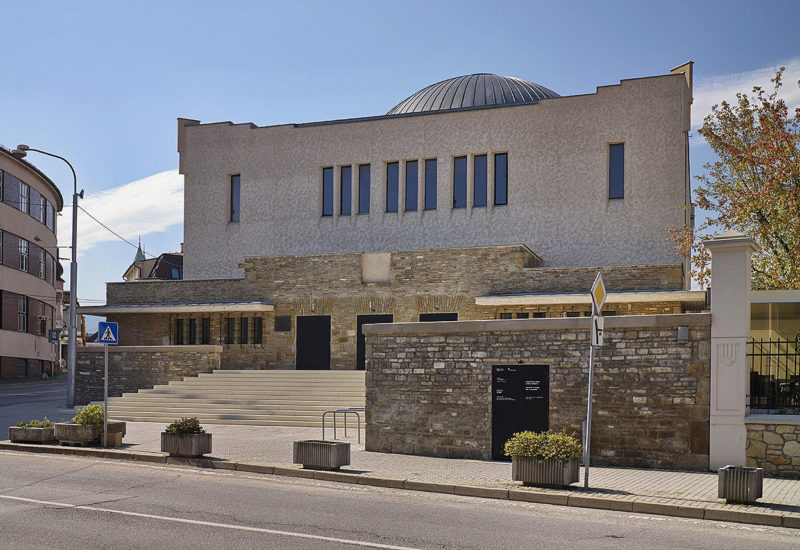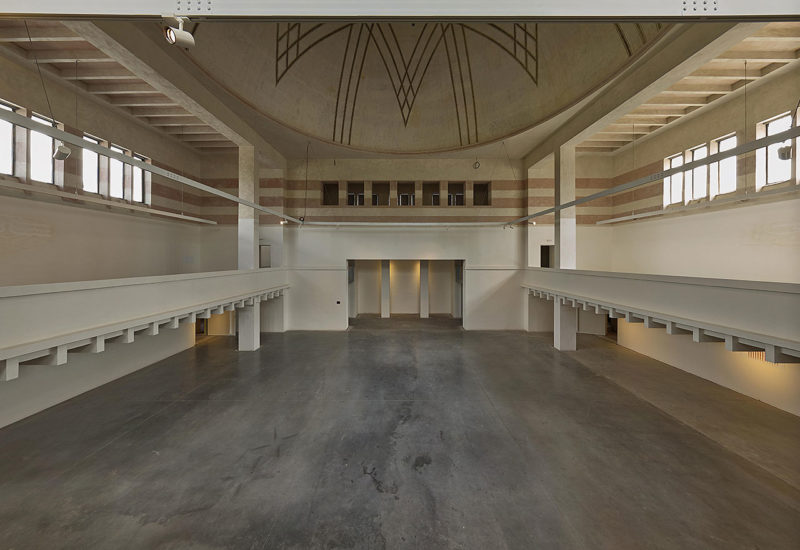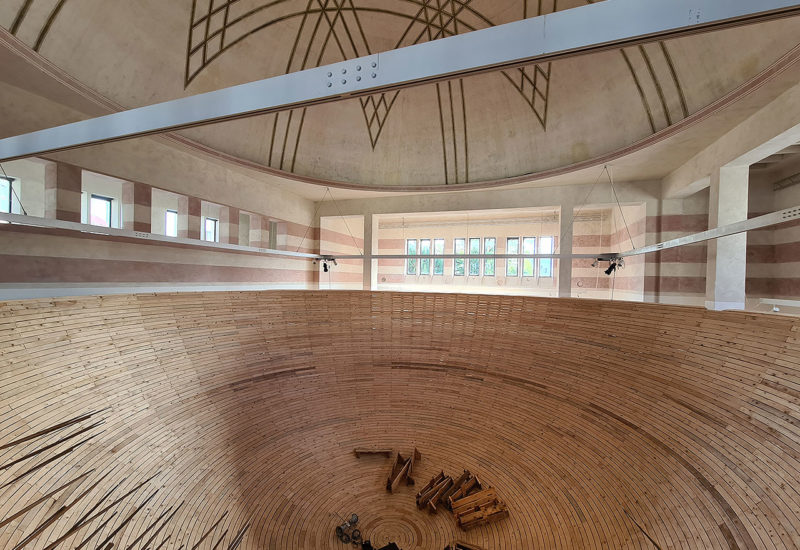Žilina, Neolog synagogue
The former synagogue, built in 1928-1931 by the Neolog Jewish community, is an important work of European modern architecture in Slovakia. In the 1920s, the community conducted an international competition to design a new synagogue that would replace an older one dating from 1880. Important architects of the time, including Josef Hoffmann from Vienna and Lipót Baumhorn from Budapest, participated. Ultimately, the winner was Peter Behrens, who designed the synagogue as a domed structure, reflecting conventional notions of exotic monumentalism reserved for Jewish ritual buildings. The artistic concept divides the mass of the building horizontally by the use of two contrasting materials. The base is made of rough square stone, while the upper plastered part is pierced by an array of narrow windows making the otherwise massive block lighter. The sanctuary is a large and spacious hall, with the women’s galleries running along its sides.
After decades of neglect, during which it was used as a university hall and a cinema, the synagogue was entrusted by the Jewish community to a local NGO, Truc sphérique. Funded by EEA Grants, public and private funding, along with successful crowd-funding campaigns, the building was returned to its former glory. Although no longer serving as a house of Jewish worship, the synagogue is an important center for contemporary art and culture. The saviors of the synagogue were awarded many prestigious awards for the restoration, including the Eugen Bárkány Prize in 2017.
Address
J. M. Hurbana 220/11
Žilina
Coordinates
49°13’29.4″N
18°44’13.6″E



